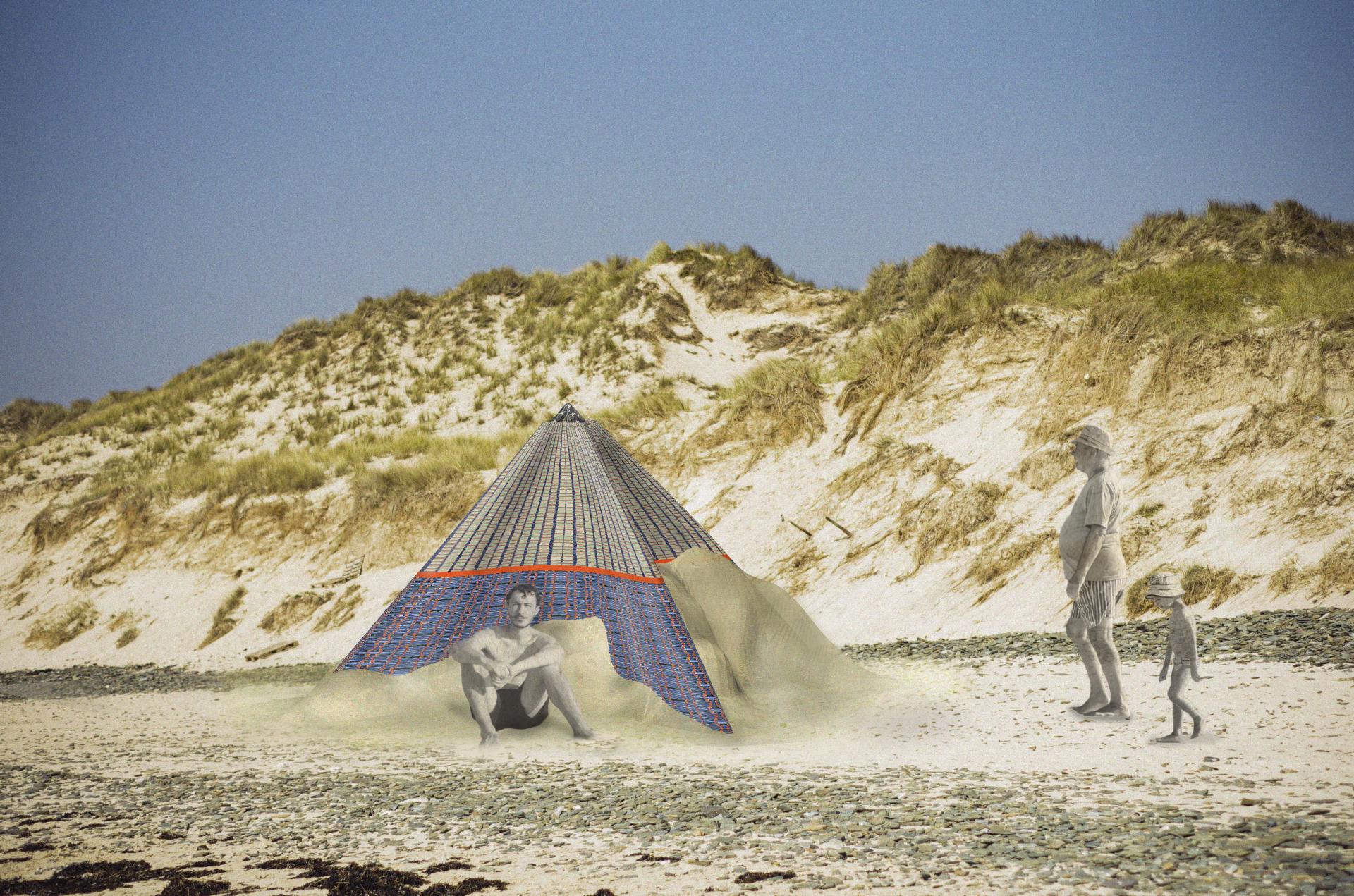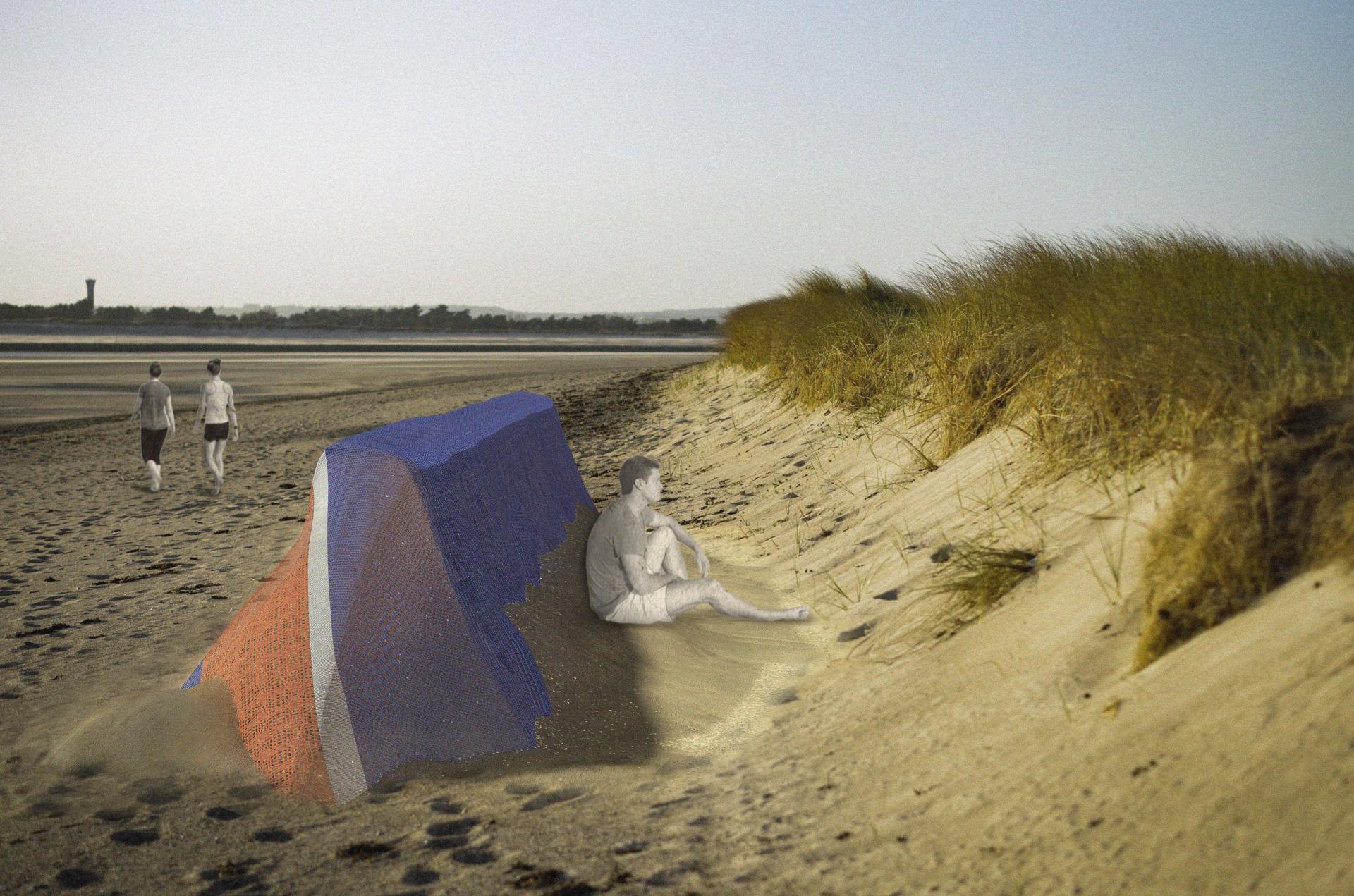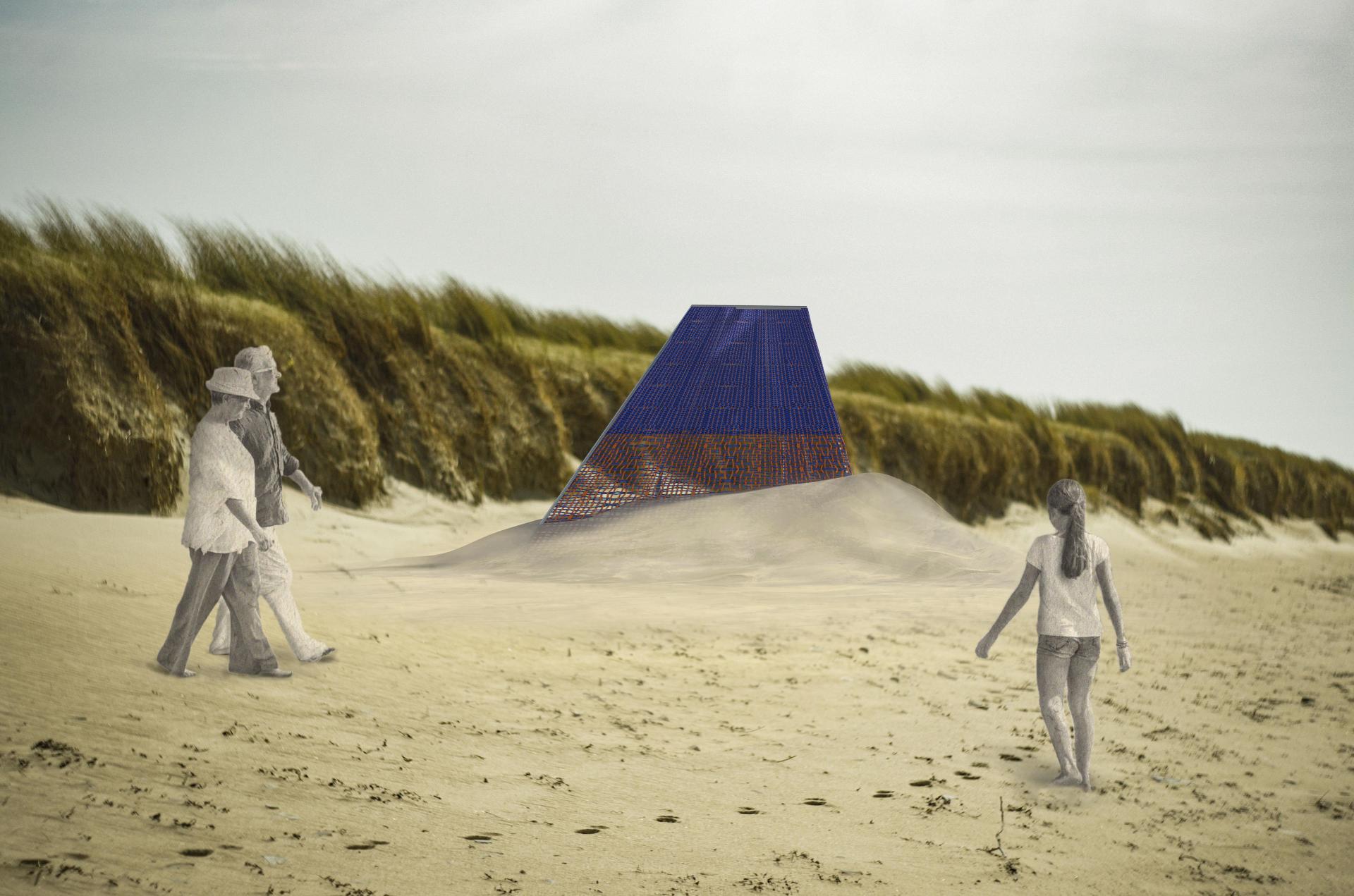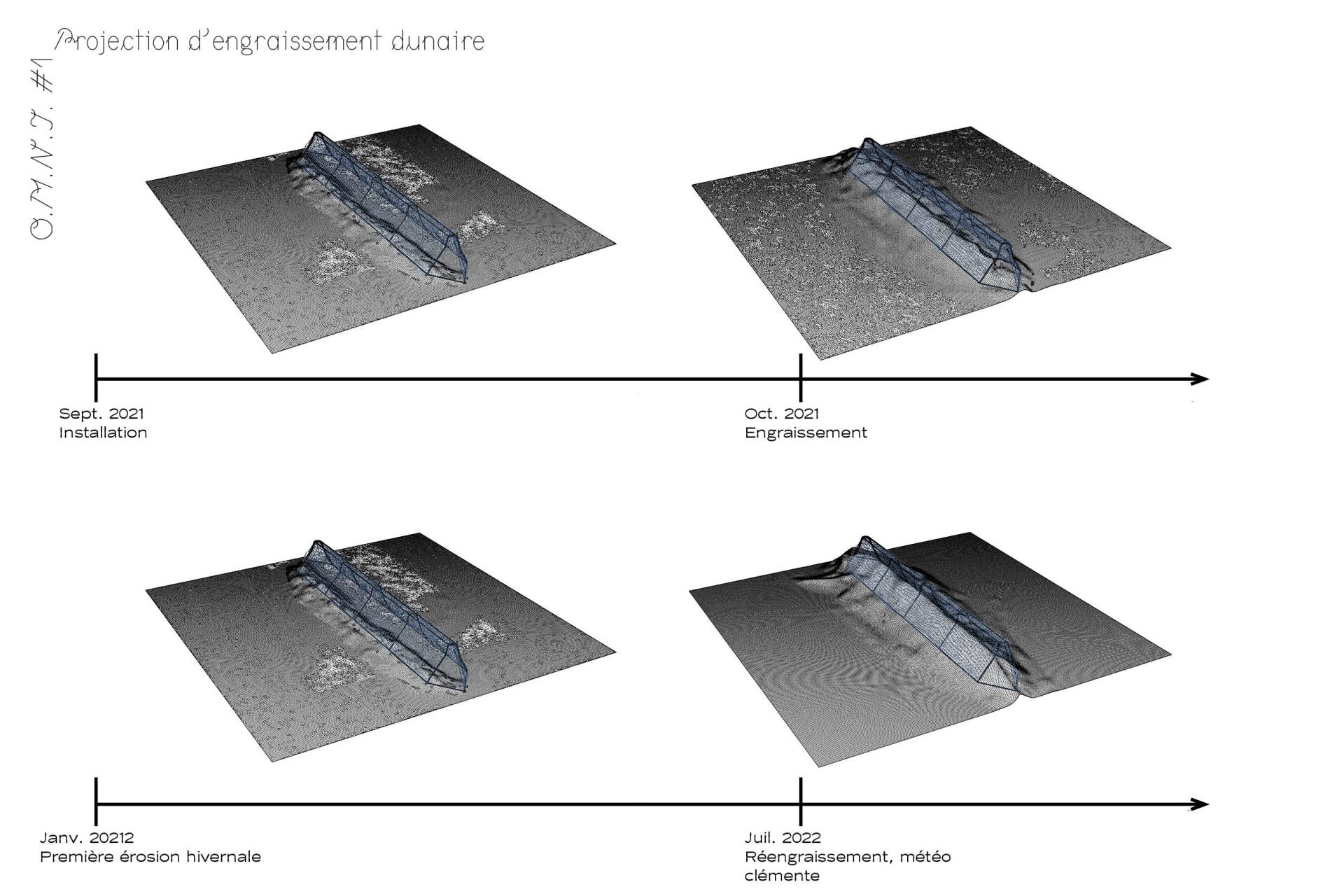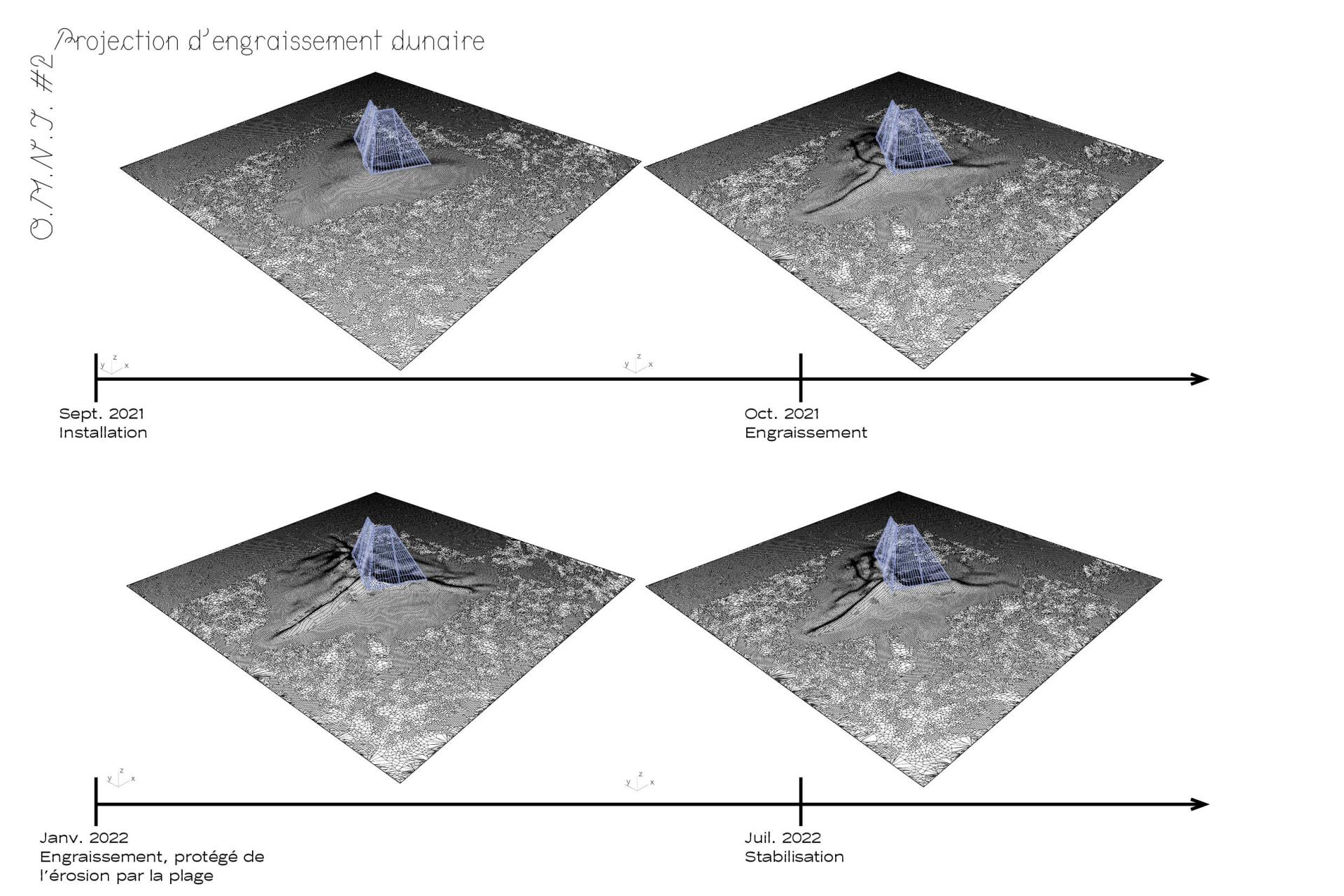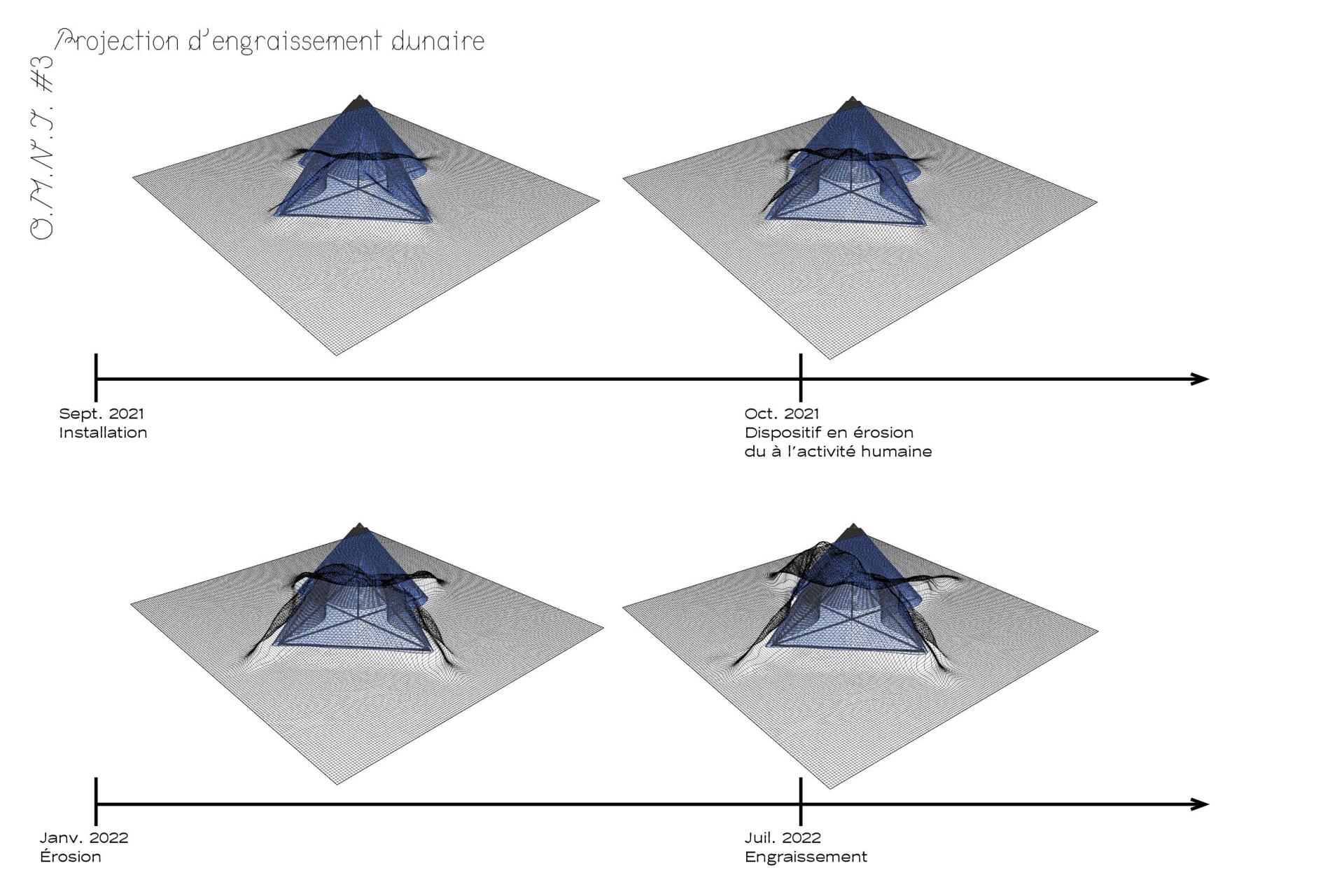U.M.I.-Unknwon Moving Objects
Basic information
Project Title
Category
Project Description
Unknown Moving Objects are both environmental and design tools, proposing to reduce dune erosion and to show the evolution of forms in autonomy in nature. These objects are thought as a matrix stacking the sand and forming artificial-natural dunes. These objects are hybrids using environmental forces to make forms grow by themselves.
This projects aims to show how dunes are forming and growing by themselves. That’s why these objects are noticeable in the environment. Made from colorful weavings
Geographical Scope
Project Region
Urban or rural issues
Physical or other transformations
EU Programme or fund
Which funds
Description of the project
Summary
Concerned by the environmental issues, my interests as a designer are focused on the making of objects. I oriented my research on the links existing between artificial and natural energies in the growing of forms in nature. Therefore I tried to develop my design approach in accuracy with the environment where the project is located.
This project is located in western normandy in France, which is a particularly valuable and brittle coast due to dune erosion. Dunes are unique areas where we can find a valuable biosphere. Dune erosion is mainly related to the shore current and countered by the wind which transports sand. Thanks to plants and grass, sand particles are stacked and dunes grow.
Unknown Moving Objects are both environmental and design tools, proposing to reduce dune erosion and to show the evolution of forms in autonomy in nature. These objects are thought as a matrix stacking the sand and forming artificial-natural dunes. These objects are hybrids using environmental forces to make forms grow by themselves.
This projects aims to show how dunes are forming and growing by themselves. That’s why these objects are noticeable in the environment. Made from colorful weavings aiming to draw attention to the forms in landscapes. When the wind Transports the sand, it is blocked into the weaving, which creates a hybrid form made by human and non-human.
This project deals with an environmental issue which is global and more and more important due to the rise of ocean levels. It is a proposal, an attempt to embrace this kind of concern as a designer, these object making processes could be developed in other contexts.
Key objectives for sustainability
This concept might reconnect human and non-human in this specific environment, which is west Normandy. With a soft human investment, the aim is to show how dunes landscapes are moving to increase human sensitivity towards nature. The goal is mainly to show how dunes are building themselves because of the wind.
The synthetics made weaving, used to catch the sand to build the dunes are useful to make this project more sustainable because of their extended lifetime. Also we do have information and knowledge about these materials lifetime more precisely than natural materials.
Although, these landscapes are fully preserved from human intervention it seems necessary to implant these weavings on these beach. First of all, these weavings might be helpful to preserve precious biodiversity of the dunes from human beings. Then it will raise awarness towards essential functions of the dunes in the environment and their movings and evolutions.
Key objectives for aesthetics and quality
In terms of aesthetics, this concept is focused on being highly recongnizable on the landscape. That is why these objects will use bright, colourful orange, and blue weavings. Then any of the users would distinct these objects from others signs, although they are inspired by marine signs and buoys.
First function accorded to these objects is to be a sign on the landscape and to indicates how much the sand level on the beach is evolving. The weavings, in addition to catch the sand and build the artificial natural dune, draw graphic scales to indicate how the dunes are growing or decreasing. The colourful fibers used to make this weaving are also essential to this scale function.
Then, these objects are fully dedicated to usual uses of the beach or the dunes like lying down or being protected from the wind. But thanks to the U.M.O., dunes would be preserved from human uses and biodiversity would be preserved to. These objects introduce new uses of the beach and raise awarness on the precious environment. By now going to the beach for a walk or enjoying the sun is a completely new experience.
Key objectives for inclusion
In terms of inclusion, this project is focused on co-design between human and non-human. It provides an example of the links between the ecological and social causes. It places back the human in a non-antrhopocentric environment considering both human and non-human interests.
Then it uses a low-tech process to develop tools to make objects in a slow, natural and seasonal temporality. Therefore it aims to reconnect humans, mainly processes of making objects to a natural temporality, mainly, accepting natural doubts and uncertitudes.
The projects is fully unterstandable with the citizens investments and their look to this objects. Because of it is manly an installations whose goal is to make people think and discuss about what they see. That's why, considering human and non-human energies is useless without humans mostly the local populations. The life of the projects would have been scheduled with local events.
Physical or other transformations
Innovative character
The U.M.I. concept respond to environmental, functional and social issues due to a complete analysis of the environmental context. That is how this concept would combined these three dimensions, inclusion, aesthetic and sustainability.
Moreover my design approach is focused on these three dimensions because in my opinion one of them cannot be considered alone. Therefore even if the environmental issue were more important in the development of this project, it is not developed without considering both aesthetic and inclusion. Sustainability is actually the converging point of these three dimensions.
Finally, U.M.I. aims to reconnect people with their environments, humans between them and also human with non-humans. The aesthetic aspects of this projects are a response to this goal, the object is a sign, a creating rituals and a non-human centered point of view.

